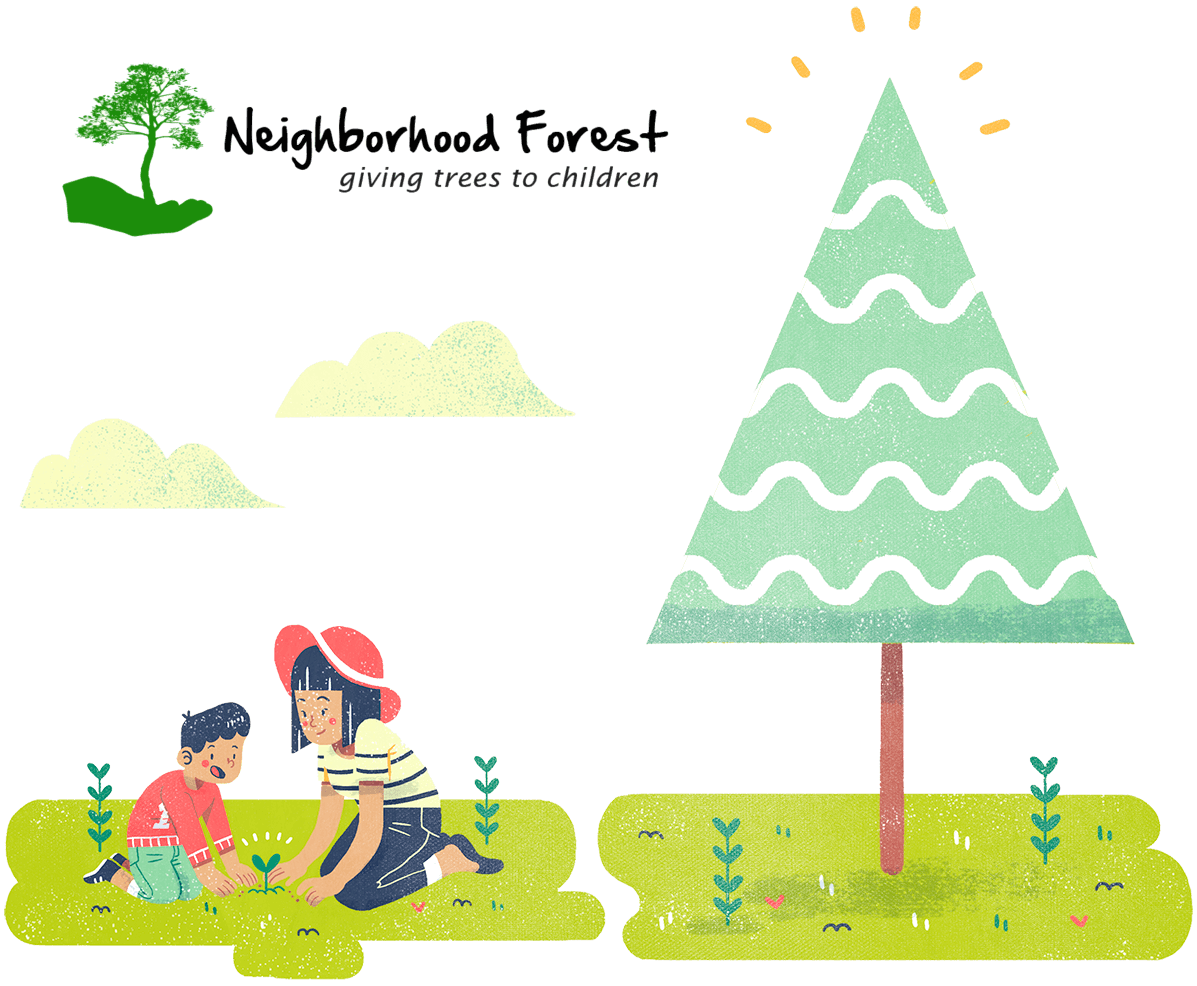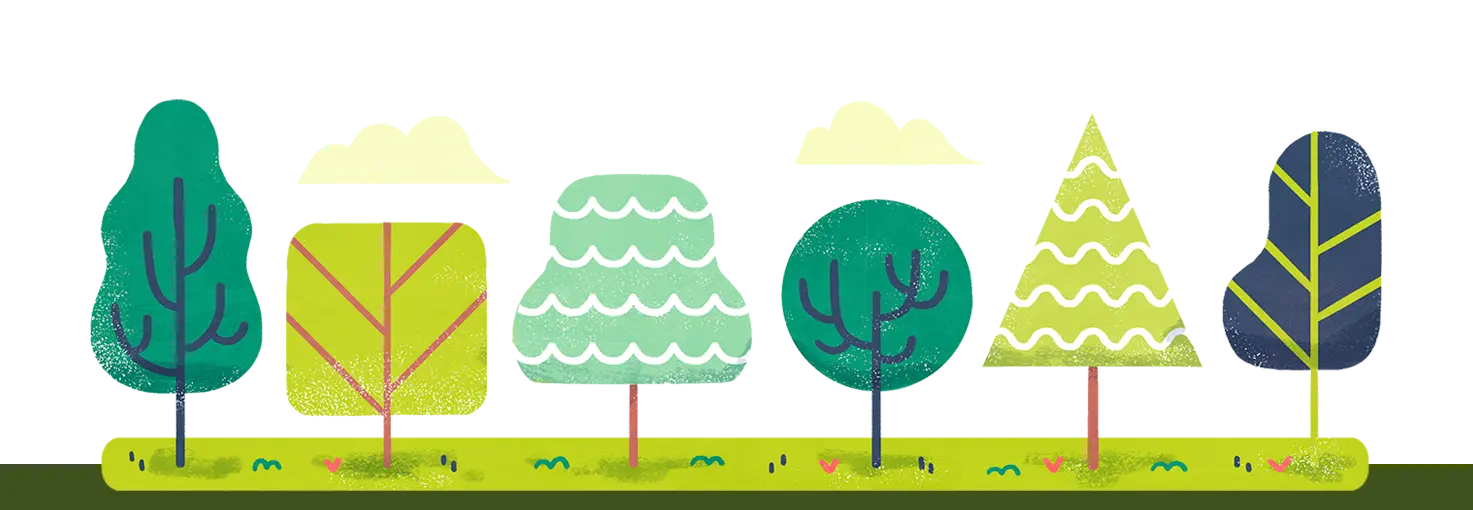Check out our 2022 Tree Species below and review our Tree Planting Guide:
Douglasfir
(Colorado, Idaho, Montana, Oregon, Utah, Washington, Wyoming)
Botanist-explorer David Douglas — this tree’s namesake — described it as “one of the most striking and truly graceful objects in nature.” Tree expert Michael Dirr heralded it as “one of the noblest forest trees.” To say the Douglas Fir is beloved by the tree people of the world is definitely accurate.
The general public has a number of reasons to appreciate this tree as well. Douglasfir is one of the nation’s most important lumber species, it makes up nearly half of all Christmas trees grown in the U.S., and its attractive appearance and growth rate make it popular in yards and parks.
The Douglasfir grows to a height of 40–70 feet and a spread of 12–20 feet at maturity.
This tree grows at a medium rate, with height increases of 13–24 inches per year.


Full sun and partial shade are best for this tree, meaning it prefers a minimum of four hours of direct, unfiltered sunlight each day.
The Douglasfir prefers acidic or neutral soil that is well-drained, though it can also be found in its native habitat of rocky mountain slopes. It is sensitive to drought.
This tree does best on a roomy site with an abundance of atmospheric moisture and can be injured by high winds.
Douglasfir seeds are used by blue grouse, songbirds, squirrels, rabbits and other small animals. Antelope, deer, elk, mountain goats and mountain sheep eat the twigs and foliage. It provides excellent cover for a wide range of animals.
While the Douglasfir may have first been introduced to cultivation by botanist-explorer David Douglas in 1826, its importance to American history continues unabated. As well as being the country’s top source of lumber today, the Douglasfir also helped settle the West, providing railroad ties and telephone/telegraph poles.
Source: Arbor Day Foundation
Eastern Redcedar
(Arkansas, Georgia, Iowa, Kansas, Kentucky, Louisiana, Mississippi, Missouri, Nebraska, New Jersey, North Carolina, Ohio)
The eastern redcedar grows to a height of 40–50 feet and a spread of 8–20 feet at maturity and grows at a medium rate, with height increases of 13–24 inches per year.
Redcedars are unusually long-lived, with the potential to live over 900 years. The oldest tree reported, from West Virginia, is 940 years old!


Full sun is the ideal condition for this tree, meaning it should get at least six hours of direct, unfiltered sunlight each day.
Redcedar foliage provides nesting and roosting cover for sparrows, robins, mockingbirds, juncos, and warblers.
The eastern redcedar is an ancient tree, dating back to aboriginal America.
Source: Arbor Day Foundation
Hackberry
(Connecticut, Illinois, Indiana, Rhode Island, South Dakota, Washington DC)
The hackberry is commonly heralded by tree experts as “one tough tree.” Found on a wide range of soils east of the Rockies from southern Canada to Florida, these trees thrive in a broad span of temperatures and on sites that vary from 14 to 60″ of annual rainfall. They can even stand up to strong winds and tolerate air pollution.
The hackberry grows well in a variety of soils. It has some tolerance for both flooding and drought.
All of this hardiness adds up to a good landscape choice, particularly if you’re looking for an energy-conserving shade tree that doesn’t require watering.
The hackberry grows to a height of 40–60 feet and a spread of 40–60 feet at maturity. This tree grows at a medium to fast rate, with height increases of anywhere from 13 inches to more than 24 inches per year.
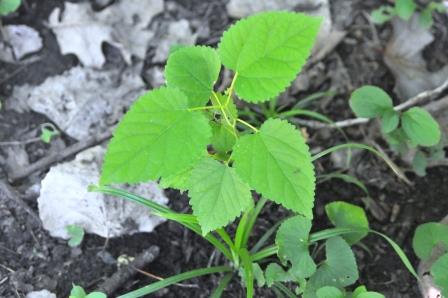

Full sun is the ideal condition for this tree, meaning it should get at least six hours of direct, unfiltered sunlight each day.
The hackberry forms characteristic corky ridges and warts on trunk and branches and tolerates strong winds, pollution, heat, drought, and salt.
It has a growth pattern that resembles the elm – without the susceptibility to disease.
The fruit of the hackberry is popular with winter birds, especially the cedar waxwing, mockingbird and robin. The tree also attracts many butterfly species including American snout, hackberry, mourning cloak, and tawny emperor.
Source: Arbor Day Foundation
Incense Cedar
(Arizona, California, Nevada)
Incense Cedar is a coniferous tree native to western North America.
As the name suggests, all parts of the tree are wonderfully aromatic.
It is a large tree, typically reaching heights of 100–130 feet. The largest known tree, located in Klamath National Forest, Siskiyou County, California, is 157 feet tall with a 39-foot circumference trunk and a 57 foot spread.
This is a fast-growing tree, adding at least 12 inches a year in its early years.
This tree can live to over 500 years old.
With its thick bark, the incense cedar is one of the most fire- and drought-tolerant plants in California.
Plant Incense Cedar in a sunny or lightly shaded area. It grows well in a wide range of soils, growing best in fertile and well-drained soils.
New plants should be kept moist for the first few years.
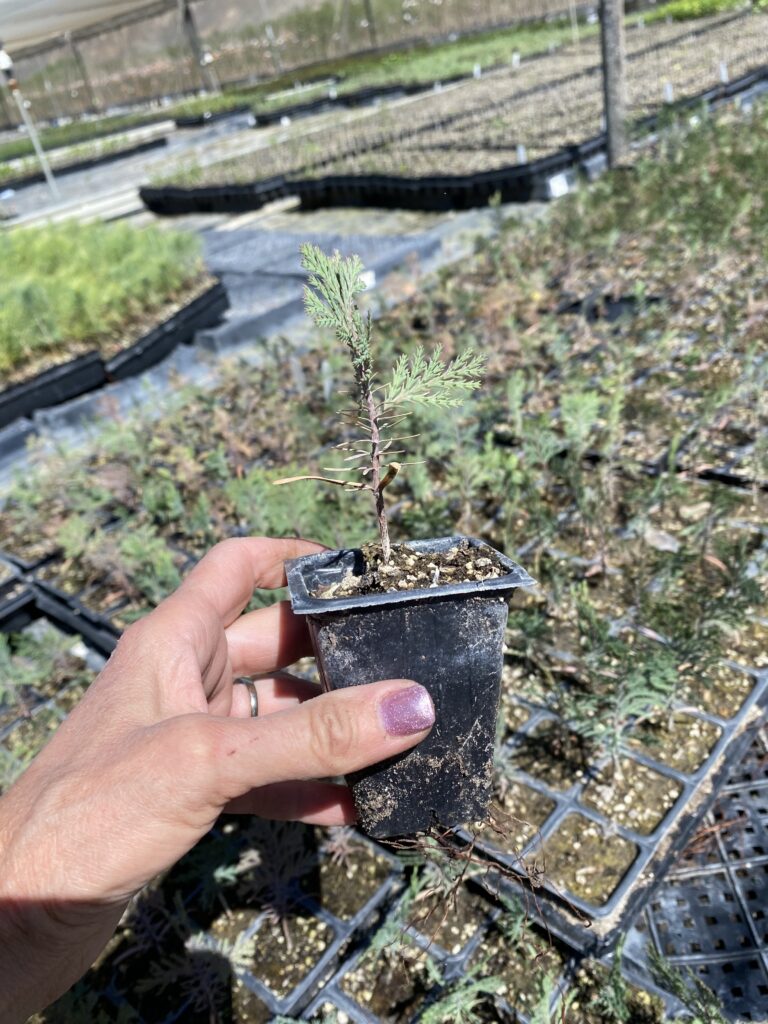

Indigenous people of California use the plant in traditional medicine, basket making, hunting bows, building materials, and to produce fire by friction. A Northern California tribe used branchlets to filter out sand from water when removing toxins from acorn meal; foliage also served as a flavoring.
The tree can be utilized for the creation of essential oils. Scientific studies have shown that these essential oils have the ability to lower the levels of microbes, such as bacteria and viruses.
Source: Wikipedia
Red Maple
(Alabama, Delaware, Florida, Maryland, South Carolina, Tennessee, Virginia, West Virginia)
The Red Maple brings color to your landscape year-round. Green stems turn red in winter, new leaves are red-tinged, turning to green. Fall color is deep red or yellow. Flowers are also red.
The Red Maple grows to a height of 40–60 feet and a spread of around 40 feet at maturity.
This tree grows at a medium to fast rate, with height increases of anywhere from 13 inches to more than 24 inches per year.
Full sun is the ideal condition for this tree, meaning it should get at least six hours of direct, unfiltered sunlight each day.
The Red Maple grows in acidic, loamy, moist, rich, sandy, silty loam, well-drained and clay soils. It prefers wet soil conditions but has slight drought tolerance.


The fruits (samaras) provide food for squirrels and many other rodents. Rabbits and deer eat the tender shoots and leaves of red maples.
The Red Maple has many claims to fame, including the greatest north–south range of any tree species living entirely in the eastern forests (Newfoundland to southern Florida).
The nation’s largest Red Maple lies in Great Smokey Mountains National Park. This tree was declared champion in 1997 by American Forests and is listed in the National Register of Big Trees as being 141 feet tall and just over 7 feet in diameter.
Source: Arbor Day Foundation
Southern Magnolia
(Texas)
The Southern Magnolia has large, creamy white and very fragrant flowers that grace this broad-leafed evergreen in late spring and early summer. Leaves are shiny green, reddish underneath.
It blooms May through June, with some blossoms throughout the summer months.
The southern magnolia grows to a height of 60–80 feet and a spread of around 40 feet at maturity.
This tree grows at a slow to medium rate, with height increases of anywhere from less than 12-24 inches per year.


Full sun and partial shade are best for this tree, meaning it prefers a minimum of four hours of direct, unfiltered sunlight each day.
The southern magnolia grows in acidic, loamy, moist, sandy, well-drained and clay soils. It can withstand some flooding and has moderate drought tolerance.
The southern magnolia is an evergreen, keeping most (but not all) of its leaves year-round. It yields fruit that is 3–8″ long, attracting squirrels, rabbits and birds—including wild turkey.
The southern magnolia is better placed in landscaping rather than along a street due to the leathery leaves and large seed pods that are shed in the fall.
The name magnolia honors a French botanist, Pierre Magnol, who admired the tree so much that he transplanted it to Europe 300 years ago.
Source: Arbor Day Foundation
Tamarack
(Alaska, Maine, Michigan, Minnesota, New Hampshire, New York, Vermont, Wisconsin)
Neighborhood Forest is excited to bring the Tamarack to our list of species this year in honor of Tamarack District Library in Lakeview, Michigan, which was instrumental in helping us go viral last year.
One of the most beautiful trees in the far northern forests of North America is the colorful deciduous conifer, commonly called the tamarack.
The Tamarack is one of the few conifer trees that changes color and drops its needles in the fall / winter.
The species turns a dazzling yellow in the fall before dropping its needles to reveal attractive flaking bark in the winter months to have its needles re-emerge a blue-green hue for the spring and summer. Every year those lovely falling needles create a fine mulch that is pleasing to the eye and completely sustainable.
The Tamarack grows up to 40 to 80 feet tall and 15 to 30 feet wide.
This species of tree requires full sun. Tamarack trees are completely intolerant of shade, so it’s important to clear out competing trees or shrubs. Making sure that your tree can grow in direct sun should help to ensure it gets adequate spacing. Place it at least 15 feet from any other trees.
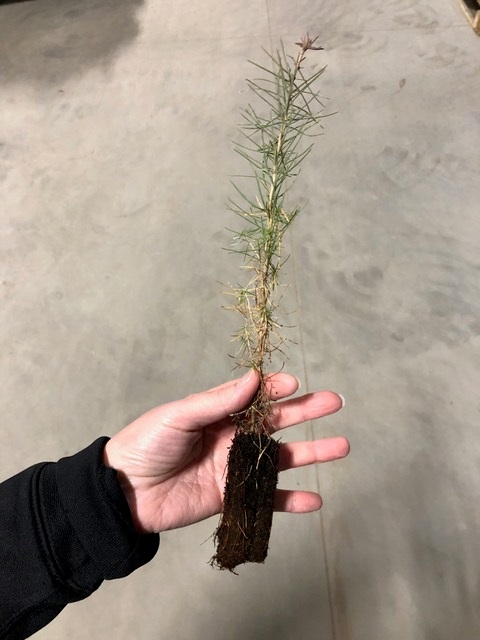

When you decide where to plant your tree, realize that this species does not like competition; it will require a good amount of space between it and any other trees to thrive.
In nature, tamaracks grow in wet areas such as bogs or swamps. Planting it in an area that gets moisture that replicates these conditions will be best for the tree. This is less important than providing ample sun but will cut down on your supplemental watering needs.
Wet, organic soil is best for Tamaracks. It is native to a type of bog called muskeg, which is comprised of peat. This rich wet acidic soil is preferred and will help your tree thrive, but as far as soil needs go, the tamarack is more adaptable here than it is for its sun requirements.
Tamarack trees require some supplemental water, especially during periods of drought and when the tree is first establishing itself. It will not tolerate being overly dry, so keeping the soil beneath it moist is important. On initial planting, adding two to three inches of good organic mulch to the dripline will help retain moisture. After a few seasons, you won’t need to add more mulch since the tree makes its own beautiful needle mulch.
During the first three years, it is important to give your tree water weekly. Follow the standard of 10 gallons per inch of trunk diameter measured by caliper at knee height. If the weather is really dry, increase the water to 15 gallons—the tamarack won’t mind!
Source: TheSpruce.com
White Birch
(Massachusetts, Pennsylvania)
Beauty and romance may be the first images many people associate with the gleaming white paper birch. But this symbol of the north country has earned its place in history as a continuously useful tree that has served North Americans since the earliest days of human activity.
Today it is one of the best-loved trees of the New England landscape, planted often for the beauty of its distinctive bark and golden fall color.
The white birch (also known as paper birch) grows to a height of 50–70 feet and a spread of around 35 feet at maturity.
This tree grows at a medium to fast rate, with height increases of anywhere from 13 inches to more than 24 inches per year.


Full sun and partial shade are best for this tree, meaning it prefers a minimum of four hours of direct, unfiltered sunlight each day.
The paper birch grows well in acidic, loamy, moist, sandy, well-drained and clay soils. While it prefers normal moisture, the tree has some drought tolerance.
This tree develops a smooth white bark that curls and peels (once mature), provides bright yellow fall color, and produces brown or green catkins in April and May.
The white birch received its name from the nature of its bark. Long ago, people would peel layers of the thin, paper-like bark and write on it as a way to send messages. Sometimes known as canoe birch—recalling its favor among Native Americans and early fur trappers as a resource for sleek, sturdy, and lightweight watercraft.
Source: Arbor Day Foundation
White Spruce
(Ontario, Canada)
The white spruce grows to a height of 40–60 feet and a spread of 10–20 feet at maturity. This tree grows at a medium rate, with height increases of 13–24 inches per year.
This tree thrives in a lot of sunlight – ideally six hours of direct sunlight per day. The white spruce grows well in a variety of different soils and has some drought tolerance.

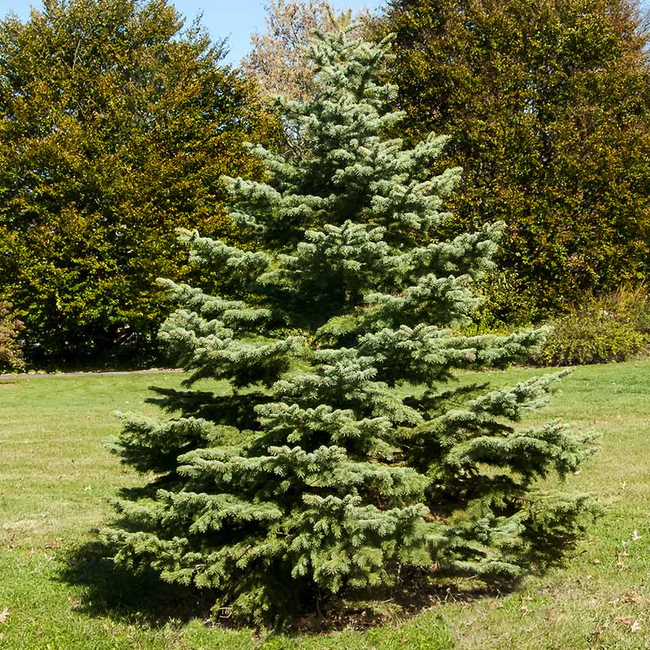
The white spruce does well when transplanted. It can withstand wind, heat, cold, drought, crowding, and some shade. It does well in cities and often serves as rural windbreaks.
Aside from providing nesting for birds and shelter for other animals, white spruces provide food for many kinds of wildlife. Crossbills, evening grosbeaks, and red-breasted nuthatches feed on its seeds. The foliage is eaten by grouse, rabbits, and deer. Red squirrels bite open cones to eat the seeds, and they delight upon young, tender spruce shoots.
When Jacques Cartier sailed up the broad St. Lawrence River in 1535, he became the first European to see North America’s white spruces. As he laid claim to the lands he beheld, he proclaimed them to be “as beautiful…as one could wish for.” The trees, he said, were “the finest trees in the world.”
Source: Arbor Day Foundation
Please check out our planting instructions and “Science of Trees” curriculum here.






















